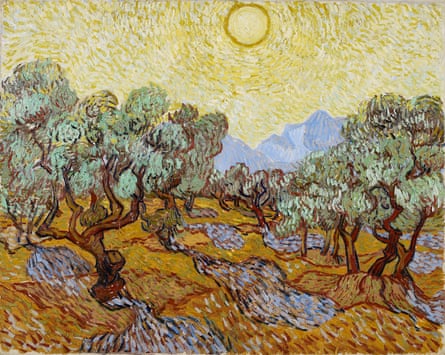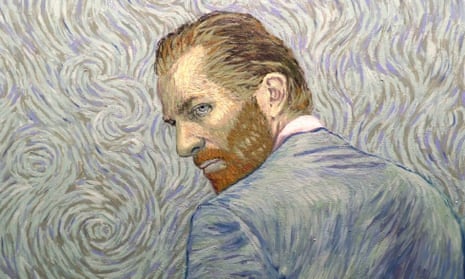Vincent van Gogh is peculiarly cursed to be travestied, misunderstood and reduced to a kitsch parody of himself. Look at the art section in your local bookshop and you will find a glitzy new publication of his “lost” Arles drawings being heavily promoted even after the Van Gogh Museum denied the drawings in it are by Van Gogh at all. Now more fake Van Gogh is on its way, with the release of the trailer for Loving Vincent, a feature film about the artist that has been made by animating oil paintings that ape his style.
The makers of this film commissioned 62,450 oil paintings by 115 professional painters to use as frames in the film, which will include 94 of Van Gogh’s own paintings “integrated” into the animated flow of images.
To judge from the trailer, the result promises to be both corny and misleading. One of the animated talking heads who share their made-up memories of Van Gogh says that he turned up one day with a girl who seemed out of his league “and the next thing I hear he’s killed himself”. What girl? What are they talking about? Van Gogh did not have any such relationship in the last months, or years, of his life. So apparently they’ve simply made up a love interest and passed it off as real biography. In the trailer, various witnesses – animated from Van Gogh’s portraits of people he knew – give their fictionalised accounts of him, but if you were going to make a good film about Van Gogh the best starting point is his own voice, as recorded in his letters. Who needs phoney vox pops when we can read the words of the man himself?
The really unappealing thing about Loving Vincent, however, is its clever-yet-dumb technique of creating an entire film from pastiches of Van Gogh’s art. This gimmick raises a smile, but it is a tasteless insult to his paintings. First, Van Gogh did not paint in the simplistic “Van Gogh style” the film creates. He looked hard at nature, learned as he worked, and his art was always evolving. Not flowing in neat animated sequences, as it is made to do in this trailer, but being reborn every time the artist stood in front of an empty canvas. Each painting by Van Gogh is a unique and turbulent document of his questing soul. To turn these charged monuments to artistic struggle into a cliched style rendered by hack painters and animated for our amusement is to lose all contact with the true power of his art.

In our age of untruths and glib simplifications, it is no surprise that famous artists get treated like Disneyfied theme park rides. But hold on, you say – what’s wrong with making Van Gogh’s art more accessible for today’s audience? The justification for this coarse caricature is of course that it “brings his paintings to life” by making them move. Van Gogh however, of all artists, does not need to be any more accessible or popular than he already is. The queues outside the Van Gogh Museum in Amsterdam really do not need to get any longer. Some artists are less famous than they deserve and I would welcome anything that helped get their art seen, their names known. An animated feature on the life of Rubens would at least be genuinely unexpected. But Van Gogh has been so comprehensively assimilated into modern culture that he needs to become less, not more, popular. We need to see the real man behind the myths, and more importantly, look long and hard at his real paintings. Instead, here’s an even more nebulous pop version of Vincent to feed our laziness.
Loving Vincent looks like it will be the very opposite of what Van Gogh needs. Another simplified and misleading populist account of his life can only add new layers of confusion and opacity to our largely fictional image of this great artist. If this is where loving Vincent leads, he doesn’t need any haters.

